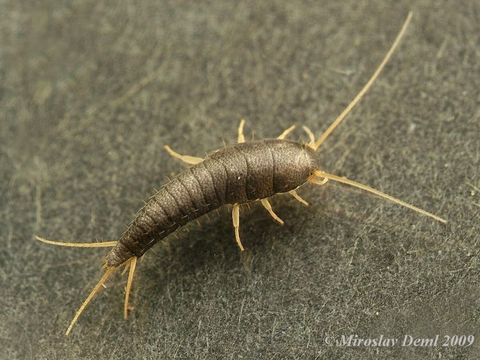
| Palaeos |  |
Insecta |
| Arthropoda | Overview |
| Page Back: Hexapoda | Unit Up: Arthropoda | Unit Home | Clade Up: Hexapoda | Page Next: Insecta |
| Unit Back: Hexapoda | Clade Down: Pterygota | Dendrogram | References | Unit Next: Pterygota |
|
Abbreviated Dendrogram
HEXAPODA | `--INSECTA (insects) |--Archaeognatha `--+--Monura `--+--Thysanura `--PTERYGOTA |
Contents
Overview |
 The common silverfish Lepisma saccharina (Thysanura - Lepismatidae). This primitive creature has proved remarkably adept at co-existing with humans Photograph by Miroslav Deml, via Encyclopedia of Life, Creative Commons Attribution. |
Whether one defines hexapoda as synonymous with, or the more inclusive clade that includes, the insects doesn't really matter much, as all the small wingless forms that evolved during the Devonian evolutionary radiation of life on land are basically very similar. The various groups considered here constitute an evolutionary seqyuence that in its broad lines can be quite clearly traced. The problem of whether the nearest relative of hexapods/insects are myriapods or crustaceans has been discussed elsewhere.
Actually, dividing the wingless insects among two units is really just an artifact of cladistic analysis, as both morphological and molecular studies agree that some wingless insects are more clearly further from the winged insects than others, and therefore some are more basal (primitive) and go in a more inclusive clade, others more derived (specialised, advanced) and so should be considered separately. Hence this unit can also be called "Wingless Insects part 2,". But because it is also about Insects as such, we have dedicated a whole page just to insects of all kinds, regardless of whether they are with or without wings MAK120516
| Page Back: Hexapoda | Unit Home | Page Top | Page Next: Insecta |
page MAK120516; Creative Commons Attribution;